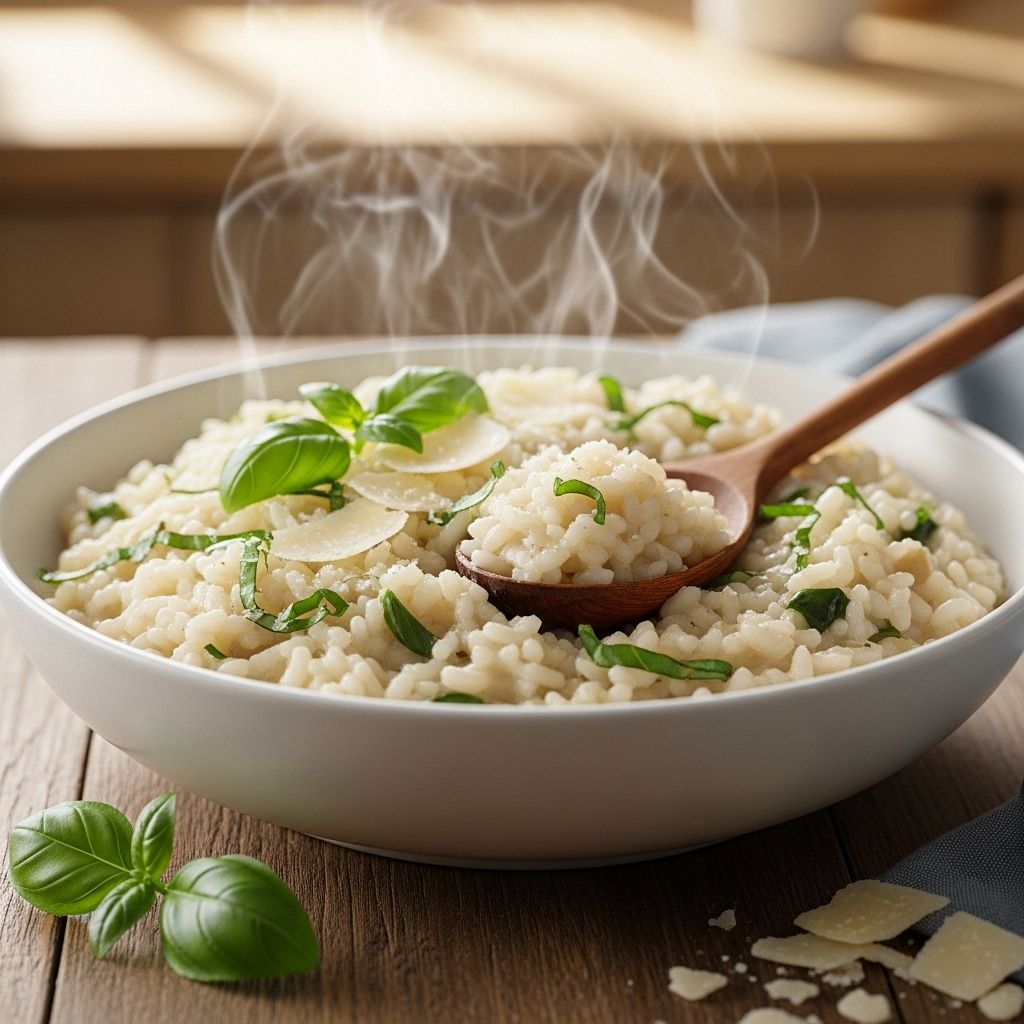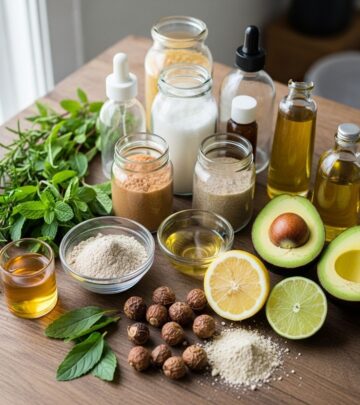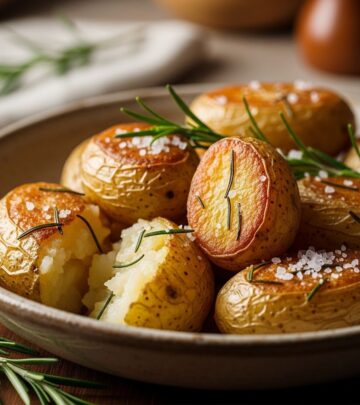Classic Creamy Risotto: The Perfect Guide for Beginners and Pros
Bring a silky, restaurant-style rice dish to your table with simple pantry staples.

Image: HearthJunction Design Team
Classic Creamy Risotto: The Ultimate Home Cook’s Guide
Risotto is one of the world’s most beloved comfort foods, celebrated for its creamy texture and luxurious flavor. Despite its reputation for being fussy or difficult, making restaurant-quality risotto at home is straightforward once you master some basic techniques. Whether you’re a culinary beginner or a seasoned home cook, this guide will walk you through every essential step, from preparing your ingredients to serving up a bowl of perfectly creamy risotto.
What Is Risotto?
Risotto is an iconic Italian rice dish, notable for its rich, velvety consistency. Unlike pilaf or steamed rice, risotto is made by slowly stirring rice as it absorbs flavorful hot broth, creating a creamy emulsion without any added cream. The dish is endlessly customizable—enjoy it simply with cheese and black pepper, or add vegetables, seafood, or meats for a heartier meal.
Why Make Risotto at Home?
- Flavor Customization: Control your flavors, seasonings, and mix-ins.
- Simple Ingredients: Requires only a handful of pantry staples.
- Restaurant-Quality Results: Achieve creamy, dreamy texture every time.
- Impressive Presentation: Perfect for dinner parties or cozy nights in.
Essential Ingredients for Classic Risotto
To achieve traditional risotto at home, gather these key ingredients:
- Arborio Rice: The classic short-grain rice for risotto, prized for its stubby shape and higher starch content that creates creaminess.
- Butter: For sautéing and finishing, lending a rich mouthfeel.
- Onion or Shallot: Provides a mild aromatic base that won’t overshadow rice’s creamy flavor.
- Dry White Wine: Adds acidity, brightness, and depth (optional but highly recommended).
- Warm Broth: Chicken makes a classic foundation, but vegetable broth works for a vegetarian version. Always keep the broth warm for even absorption.
- Freshly Grated Parmesan Cheese: Melts into the warm rice for a nutty, umami punch.
- Salt and Black Pepper: For seasoning.
Optional additions include sautéed mushrooms, peas, herbs, lemon zest, or a swirl of truffle oil.
Step-by-Step Instructions for Perfect Risotto
- Heat the Broth
- Add chicken or vegetable broth to a saucepan and bring to a gentle simmer. Reduce heat to low and keep covered, so the broth remains hot while you cook.
- Sauté the Aromatics
- Melt half the butter in a large, heavy-bottomed skillet or Dutch oven over medium heat.
- Add finely chopped onion (or shallot) and a pinch of salt, cooking until soft and translucent—usually about 5 minutes.
- Toast the Rice
- Add the Arborio rice to the skillet, stirring frequently until the grains are very lightly toasted and look slightly translucent around the edges—about 2-3 minutes.
- Toasting deepens rice flavor and helps maintain the grains’ signature bite.
- Deglaze with Wine
- Pour in a splash of dry white wine. Stir constantly, scraping up any brown bits from the pan, until the wine is mostly absorbed. This step brightens the dish’s overall flavor.
- Simmer and Stir
- Add about 3/4 of your hot broth to the pot. Cover and allow rice to simmer gently for 10 to 15 minutes, stirring just once or twice until rice is nearly al dente.
- Uncover. Add the remaining broth a 1/2 cup at a time, stirring gently after each addition. Wait until most of the broth is absorbed before adding more. Continue until rice is lusciously creamy and fully tender, but not mushy.
- Finish With Cheese and Butter
- Remove from heat. Stir in freshly grated Parmesan, remaining butter, and a generous crack of black pepper. Taste and season with additional salt or pepper if needed.
- The cheese and butter finish ensures maximum creaminess and flavor.
- Serve Immediately
- Risotto is best enjoyed hot, spooned into shallow bowls and finished with a shower of additional Parmesan, extra pepper, and freshly chopped herbs if desired.
Risotto Pro Tips and Common Pitfalls
- Keep Broth Hot: Adding cold or room temperature broth can disrupt the cooking process and lengthen cook time.
- Don’t Over-Stir: Stirring is essential for releasing starches, but too much can make risotto gluey rather than creamy.
- Use the Correct Rice: Other varieties like Carnaroli or Vialone Nano work, but never substitute for long-grain or standard white rice.
- Finish Off the Heat: Always stir in your butter and cheese after cooking for silkier results.
- Eat Immediately: Risotto doesn’t hold well for long. Cook just before serving for the best texture.
Risotto Variations and Add-Ins
While the classic risotto is delicious in its simplicity, it also serves as a blank canvas for additional flavors. Consider these popular twists:
- Mushroom Risotto: Stir sautéed mushrooms into your risotto along with the cheese.
- Vegetable Risotto: Add peas, asparagus, or spinach for a springy touch.
- Seafood Risotto: Fold in cooked shrimp or scallops just before serving.
- Lemon Risotto: Stir in lemon zest and a squeeze of juice for brightness.
- Herb Risotto: Mix in chopped parsley, basil, or chives to finish.
Classic Risotto Recipe Table
| Ingredient | Amount | Notes |
|---|---|---|
| Arborio rice | 1 1/2 cups | Short-grain, high-starch |
| Chicken or vegetable broth | 5 cups | Heated, keep warm |
| Unsalted butter | 4 Tbsp (divided) | For sautéing and finishing |
| Onion (finely chopped) | 1 small | Or shallot |
| Dry white wine | 1/2 cup | Optional but flavorful |
| Parmesan cheese (grated) | 2/3 cup | Plus more for serving |
| Salt | To taste | |
| Black pepper | To taste |
Serving Suggestions
- Plate in shallow bowls and garnish with extra parmesan, cracked black pepper, and finely chopped herbs for color.
- Pair with a crisp salad or roasted vegetables.
- Serve as a side to grilled meats, sautéed chicken, or baked fish.
- For a main dish, add roasted mushrooms, peas, or shrimp for extra protein and flavor.
Storage and Reheating Tips
- Refrigerate leftovers in an airtight container for up to 3 days.
- Reheat gently with a splash of broth or water on the stove to restore creaminess.
- Do not freeze: Risotto’s signature texture does not survive freezing and thawing well.
Risotto FAQs
What rice is best for risotto?
Classic risotto calls for Arborio rice due to its high starch content and short, stubby grains. Other options like Carnaroli and Vialone Nano are traditional and deliver equally creamy results.
Can I make risotto without wine?
Yes! While wine adds bright acidity and complexity, you can simply skip it and move directly to adding broth. You may wish to finish with a splash of lemon juice for brightness.
Is risotto gluten-free?
Yes, risotto made with traditional ingredients is naturally gluten-free. Always verify broths and add-ins to ensure safety.
Why is my risotto not creamy?
Creaminess comes from both the rice’s starch and the gentle, gradual introduction of hot broth as you stir. Skipping steps, using the wrong rice, or cooking too quickly may result in a less creamy texture.
How do I flavor risotto?
Add sautéed vegetables (like mushrooms, peas, asparagus), cooked meats, seafood, or finish with herbs and citrus zest. Stir these in after the rice is cooked for best results.
Can I make risotto ahead of time?
Risotto is best eaten fresh and creamy. If you must prepare ahead, undercook slightly and finish with remaining broth and cheese just before serving.
Quick Tips for Risotto Success
- Always use hot broth for best absorption.
- Stir regularly but don’t overdo it—gentle folds are enough.
- Finish risotto “all’onda”—it should move like a gentle wave on your plate, not sit stiffly.
- Error on the side of slightly loose, not tight.
Risotto Variations to Try
- Mushroom Risotto: Sauté sliced mushrooms in butter, finish with thyme.
- Lemon & Pea Risotto: Add lemon zest and sweet peas at the end for a bright, springy dish.
- Baked Risotto: Combine ingredients in a Dutch oven, bake covered, then finish uncovered with cheese, herbs, and lemon.
- Asparagus Risotto: Fold in chopped, tender asparagus in the final minutes.
Advanced Tips for the Ambitious Cook
- Try using a high-quality homemade stock for even deeper flavor.
- For extra richness, add a spoonful of mascarpone cheese at the end.
- Swap a portion of broth for mushroom stock or steeped dried porcini water for a classic umami boost.
- Infuse the broth with herbs, garlic, or parmesan rinds for more complex layers of flavor.
Nutrition Profile (Approximate Per Serving)
| Calories | 430 |
| Protein | 12g |
| Carbohydrates | 68g |
| Fat | 13g |
| Fiber | 2g |
| Sodium | 900mg |
Frequently Asked Questions (FAQs)
Q: Can risotto be made vegan?
A: Yes—use vegetable broth, olive oil in place of butter, and a vegan parmesan substitute or nutritional yeast for finishing flavor.
Q: Can other cheeses be used?
A: Absolutely. Try Pecorino Romano, fontina, or even a touch of gorgonzola for a different flavor profile.
Q: What wine pairs best with risotto?
A: A light, crisp white like Pinot Grigio, Sauvignon Blanc, or Chardonnay complements the dish’s creaminess beautifully.
Q: What’s the difference between risotto and pilaf?
A: In pilaf, rice is cooked by steaming with all liquid added at once. Risotto relies on gradual broth addition and constant stirring for a creamy finish.
Q: Can I freeze leftover risotto?
A: It’s not recommended—the creamy texture suffers after thawing. Refrigerate for up to 3 days and reheat gently with broth.
References
- https://www.delish.com/cooking/recipe-ideas/a29786303/risotto-rice-recipe/
- https://www.delish.com/cooking/recipe-ideas/a55215/easy-mushroom-risotto-recipe/
- https://www.delish.com/cooking/recipe-ideas/a39562253/baked-risotto-recipe/
- https://www.delishknowledge.com/asparagus-risotto/
- https://www.delish.com/cooking/recipe-ideas/a24280714/instant-pot-risotto/
Read full bio of medha deb












